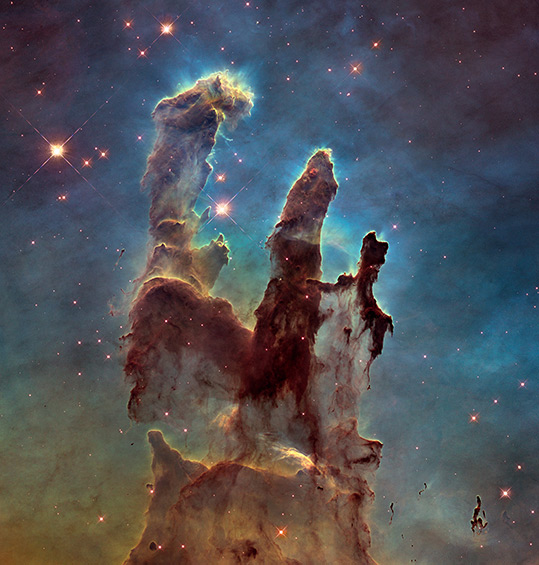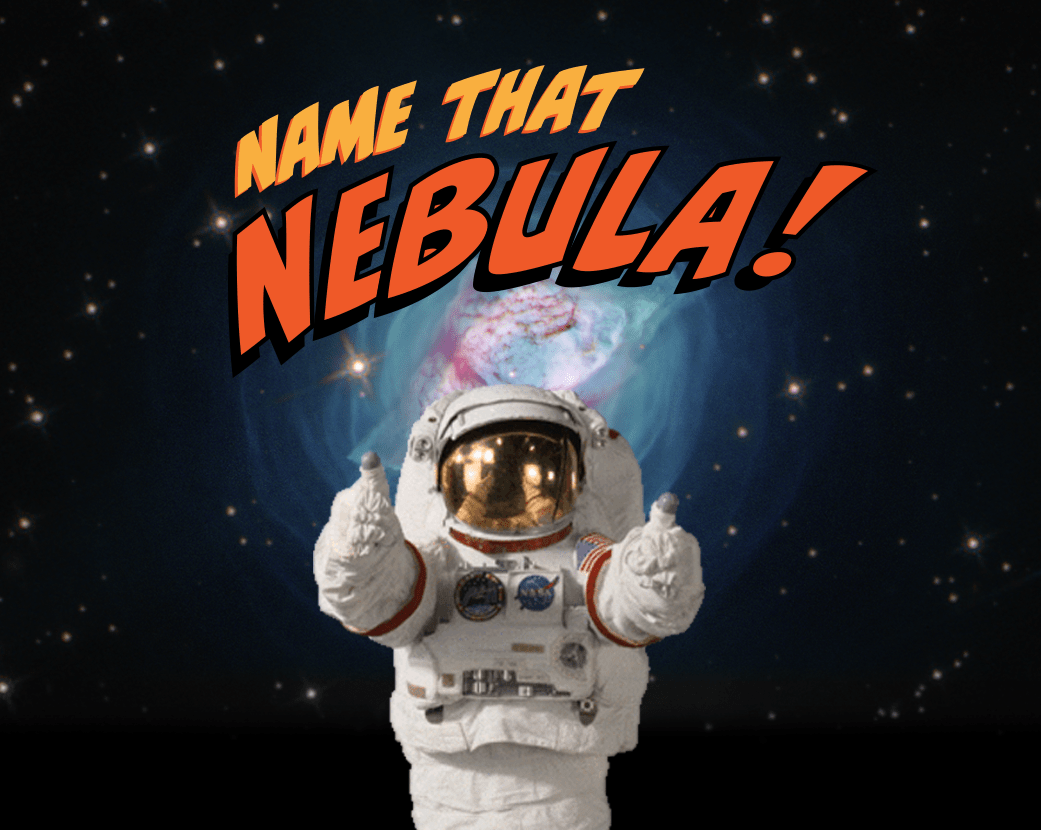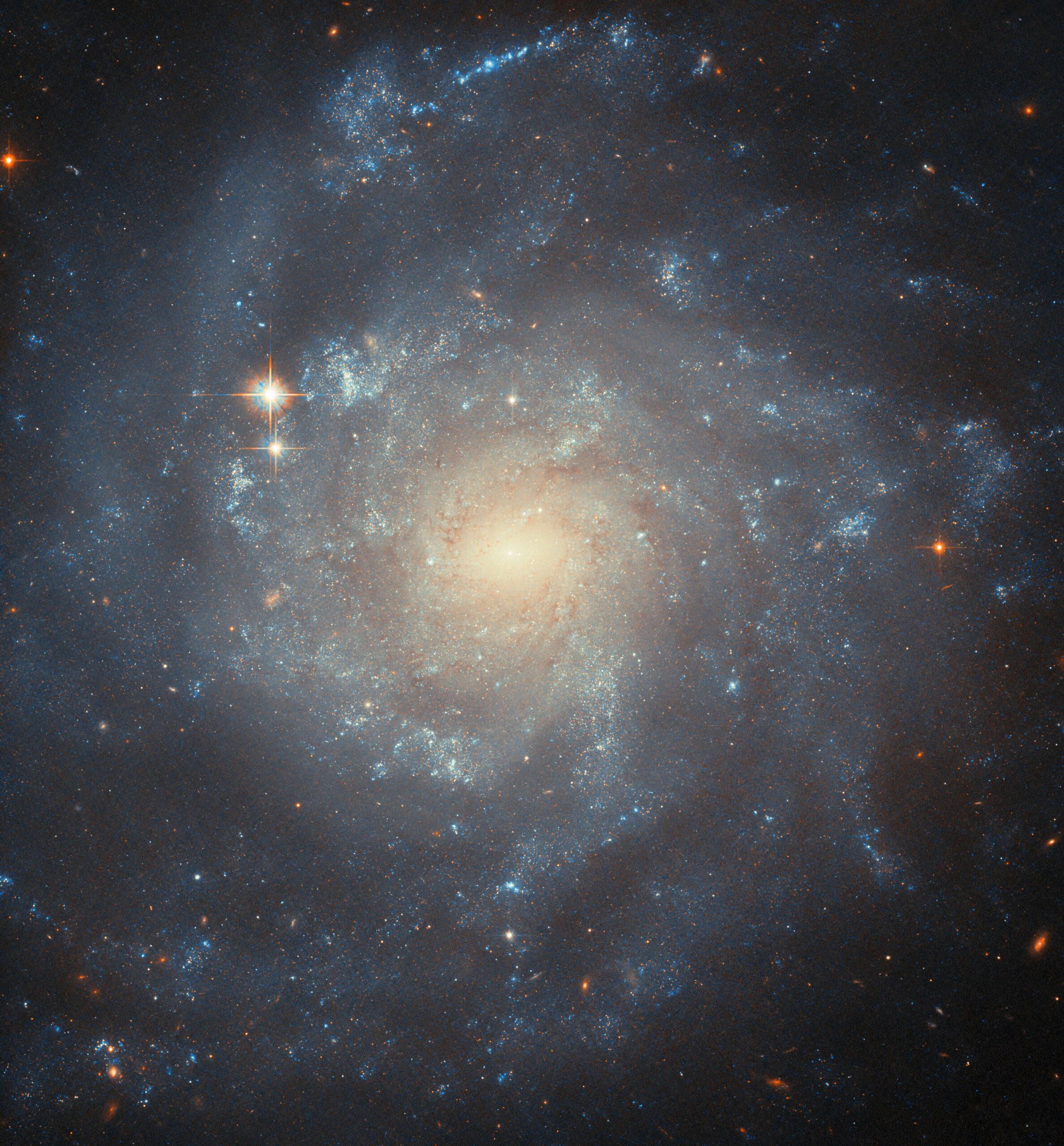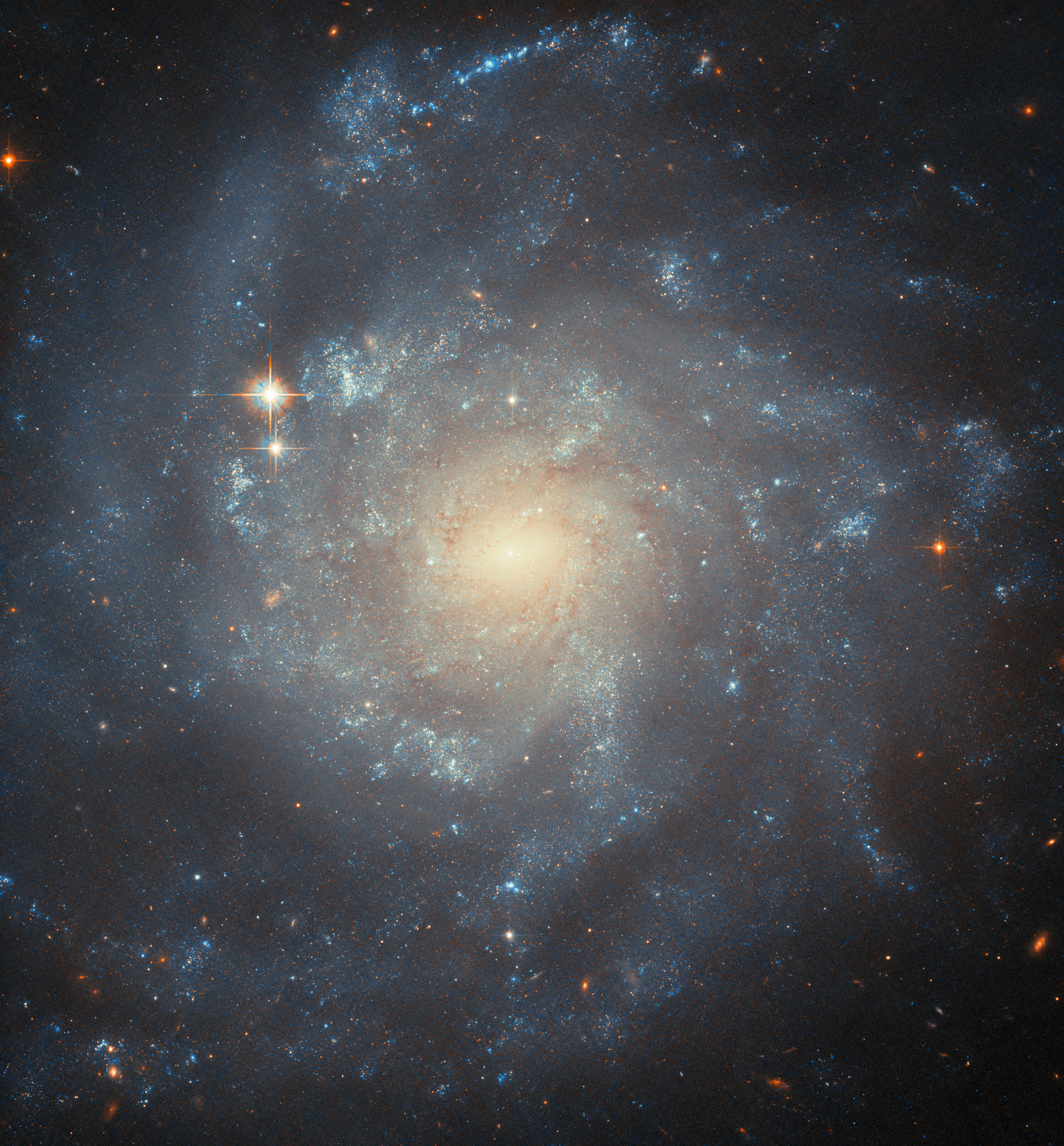Hubble Space Telescope Home Hubble Examines a Spiral Star… Missions Hubble Home Overview About Hubble The History of Hubble Hubble Timeline Why Have a Telescope in Space? Hubble by the Numbers At the Museum FAQs Impact & Benefits Hubble’s Impact & Benefits Science Impacts Cultural Impact Technology Benefits Impact on Human Spaceflight Astro Community Impacts Science Hubble Science Science Themes Science Highlights Science Behind Discoveries Hubble’s Partners in Science Universe Uncovered Explore the Night Sky Observatory Hubble Observatory Hubble Design Mission Operations Missions to Hubble Hubble vs Webb Team Hubble Team Career Aspirations Hubble Astronauts News Hubble News Hubble News Archive Social Media Media Resources Multimedia Multimedia Images Videos Sonifications Podcasts E-books Lithographs Fact Sheets Glossary Posters Hubble on the NASA App More Online Activities 2 min read
Hubble Examines a Spiral Star Factory 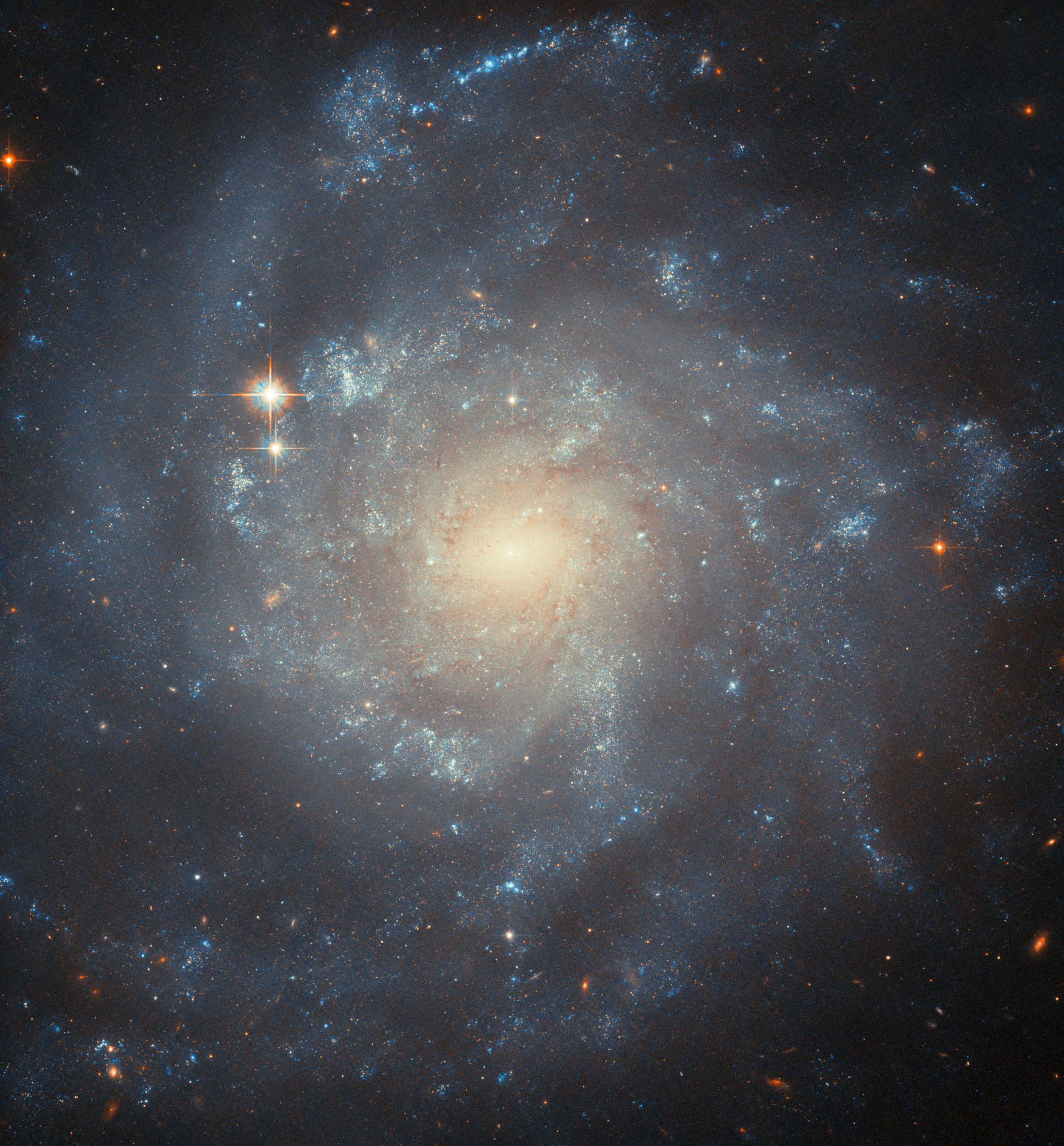 This NASA/ESA Hubble Space Telescope image features the spiral galaxy NGC 5668. ESA/Hubble & NASA, C. Kilpatrick This NASA/ESA Hubble Space Telescope image features a spiral galaxy in the constellation Virgo named NGC 5668. It is relatively near to us at 90 million light-years from Earth and quite accessible for astronomers to study with both space- and ground-based telescopes. At first glance, it doesn’t seem like a remarkable galaxy. It is around 90,000 light-years across, similar in size and mass to our own Milky Way galaxy, and its nearly face-on orientation shows open spiral arms made of cloudy, irregular patches.
This NASA/ESA Hubble Space Telescope image features the spiral galaxy NGC 5668. ESA/Hubble & NASA, C. Kilpatrick This NASA/ESA Hubble Space Telescope image features a spiral galaxy in the constellation Virgo named NGC 5668. It is relatively near to us at 90 million light-years from Earth and quite accessible for astronomers to study with both space- and ground-based telescopes. At first glance, it doesn’t seem like a remarkable galaxy. It is around 90,000 light-years across, similar in size and mass to our own Milky Way galaxy, and its nearly face-on orientation shows open spiral arms made of cloudy, irregular patches.
One noticeable difference between the Milky Way galaxy and NGC 5668 is that this galaxy is forming new stars 60% more quickly. Astronomers have identified two main drivers of star formation in NGC 5668. Firstly, this high-quality Hubble view reveals a bar at the galaxy’s center, though it might look more like a slight oval shape than a real bar. The bar appears to have affected the galaxy’s star formation rate, as central bars do in many spiral galaxies. Secondly, astronomers tracked high-velocity clouds of hydrogen gas moving vertically between the disk of the galaxy and the spherical, faint halo which surrounds it. These movements may be the result of strong stellar winds from hot, massive stars, that would contribute gas to new star-forming regions.
The enhanced star formation rate in NGC 5668 comes with a corresponding abundance of supernova explosions. Astronomers have spotted three in the galaxy, in 1952, 1954, and 2004. In this image, Hubble examined the surroundings of the Type II SN 2004G, seeking to study the kinds of stars that end their lives as this kind of supernova.
Facebook logo @NASAHubble @NASAHubble Instagram logo @NASAHubble Media Contact:
Claire Andreoli
NASA’s Goddard Space Flight Center, Greenbelt, MD
claire.andreoli@nasa.gov
Details Last Updated Sep 12, 2024 Editor Andrea Gianopoulos Location NASA Goddard Space Flight Center Related Terms Astrophysics Astrophysics Division Galaxies Goddard Space Flight Center Hubble Space Telescope Missions Spiral Galaxies The Universe
Keep Exploring Discover More Topics From Hubble Hubble Space Telescope
Since its 1990 launch, the Hubble Space Telescope has changed our fundamental understanding of the universe.

Hubble Focus: Galaxies through Space and Time
Hubble Focus: Galaxies through Space and Time

